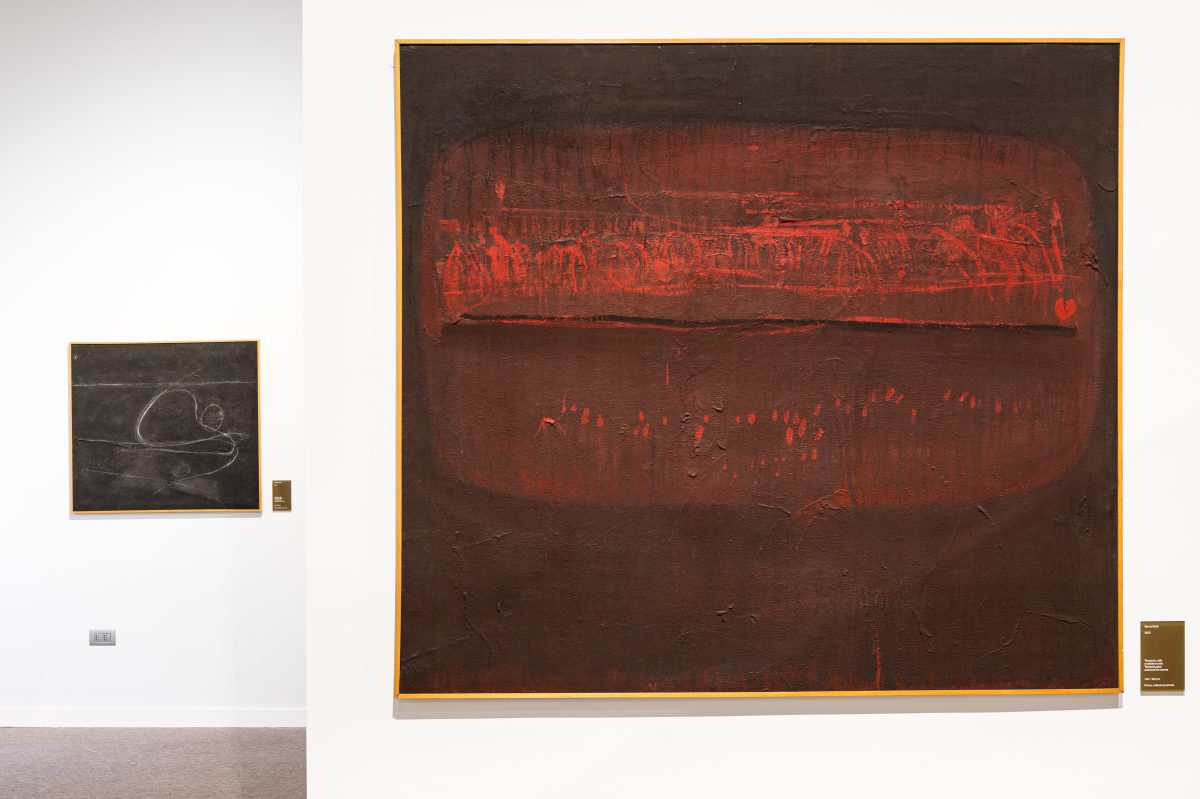bice lazzari: i linguaggi del suo tempo
The exhibition traces Lazzari’s entire career, from her applied arts of the 1930s and 1940s, to the works of her final period marked by a rigorous minimalism, encompassing all the stages of her creative evolution: from mural painting to the decoration of the ocean liner Raffaello, from textile designs commissioned by Gio Ponti to the acquisitions by the Galleria Nazionale under Palma Bucarelli.
The retrospective at Palazzo Citterio, Lazzari’s first comprehensive survey in Italy, invites visitors on a journey through the evolution of an artistic language that, while always deeply personal, engaged radically and poetically with its time and with Italian and European artistic research from the 1940s to the 1980s. Her work reveals a unique sensitivity and an original mastery of color, as well as the formulation of a coherent and highly recognizable visual vocabulary developed throughout her career. In composing this visual panorama, one perceives the presence of pictorial codes that must be deciphered in order to gain a broader and more inclusive understanding of Italian and European art of the period.
With Bice Lazzari, we witness the emergence of a new visual system, one that establishes a close relationship between image and narrative structure, fully embracing the ethical principle of her generation: the rejection of any crystallization into static, socially sanctioned forms. Her pictorial identity coincides with her research itself — a continuous germination of forms, not directed but evocative, aimed at conjuring a world of her own, intimate and parallel, where color becomes a vehicle of expression and mark-making generates a vision that is open, calm, and assured.
Studying Lazzari’s work also sheds light on artistic movements, affinities, and reinterpretations — such as Venetian Spatialism — and on her exploration of the relationship between painting and music, examined by Mirella Bentivoglio. Her work intersected with that of leading critics and scholars of her time, including Emilio Villa, Giulio Carlo Argan, Enrico Crispolti, Filiberto Menna, Lea Vergine, Simona Weller, Guido Montana, and others.
Moreover, her identity as both woman and artist — or, as Simona Weller aptly described it, “Bice’s feminism, despite her intention to conceal it” — was expressed through daily practice: through making, demonstrating, and researching. This distinctive trait was first underscored by Lea Vergine in the exhibition The Other Half of the Avant-Garde: 1910–1940. Women Painters and Sculptors in the Historical Avant-Garde Movements. Bice Lazzari thus emerges as an iconic figure who restores value and historical recognition to women artists — often overlooked — who pursued abstraction during one of the most dynamic periods of female artistic production in Italy (1969–1980).

